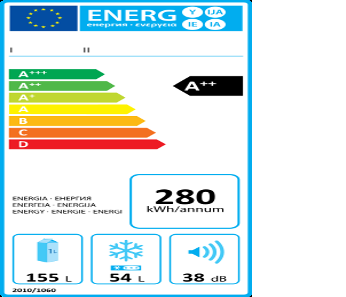Prepaid meters have made many households recognise the importance of reducing energy costs. As a result there is an increased adoption of energy efficient appliances to facilitate reduction in energy costs. The use of energy efficient appliances is on the rise with the race to reduce Greenhouse Gas (GHG) emissions and energy costs currently underway.
Consumers require information on the appliances they buy, for them to make informed decisions as they choose between various models. Generally, people are not well informed about the available energy efficient appliances. Certain information providers are not transparent about products provided. The producers of these technologies are usually well informed about the energy efficient capabilities of these appliances as compared to potential buyers.
Information needs to be specific, vivid, simple, and personal to increase its credibility so as to establish more trust with potential buyers of these appliances and technologies. Some of the products that have adopted energy labelling to inform consumers include but are not limited to;
- Washing machines
- Dryers
- Refrigerators
- Freezers
- Electric ovens
- Televisions
- Dishwashers
- Light bulbs
Appliances have energy efficiency ratings in terms of a set of energy efficiency classes. These ratings range from A to G, with A as the most energy efficient and G the least. A+, A++ and A+++ were introduced on several products in an attempt to keep up with energy efficient grades. The labelling makes use of pictograms and this allows manufacturers to use a single label for appliances sold in different countries around the world. Consumers need to look for products that have efficiency arrow pointing to the green section on the label as compared to red ones.
In addition to purchasing energy efficient appliances, consumers can also perform home energy audits; these are also known as home energy assessments. Home energy audits will help consumers understand the total energy consumption at household level. This can determine how much energy your home uses and where energy is being lost in your house. Solutions can then be implemented to the problem areas to make the home more energy efficient and comfortable. The home audit can also help home owners to determine the capacity of installing solar energy which reduces the burden on the national grid and ultimately leads to reduced GHG emissions.
The first step in making home energy and cost saving improvements before adding a renewable energy system is an energy audit.
Efforts to save energy and reduce costs at household level require an understanding of how energy is billed. When you look at your electric utility bill, it will tell you the amount of energy bought, the energy charge, tender amount and applicable tax. Ideally the bill should also show you how much power you used but it may not give you a breakdown of all these charges. Obtaining a copy of the rate schedule that applies to this bill and recalculating the total using consumption information from the bill always helps to understand the charges. Understanding your utility bill may then serve as a means to reducing utility costs and using energy more efficiently.

The kilowatt hour (kWh) of electrical energy is the standard billing unit for electricity. This unit is a measure of rate of energy use multiplied by the length of time it is used, (kW x hours = kWh). The higher the power rating on your electrical equipment, and the longer you use it, the more kWh meaning the more energy you consume. Most all rate schedules include an energy charge per kWh for electricity consumption. The energy charge is based on the total number of units logged over the billing period, generally about one month. The International Energy Agency has estimated that one third of our energy requirements can be reduced by 2050. Being energy efficient will significantly cut down on Greenhouse Gas emissions and contribute the Sustainable Development Goal 7 on access to Affordable and Clean Energy. Energy efficiency means using less energy to do the same tasks whilst provide products and services.